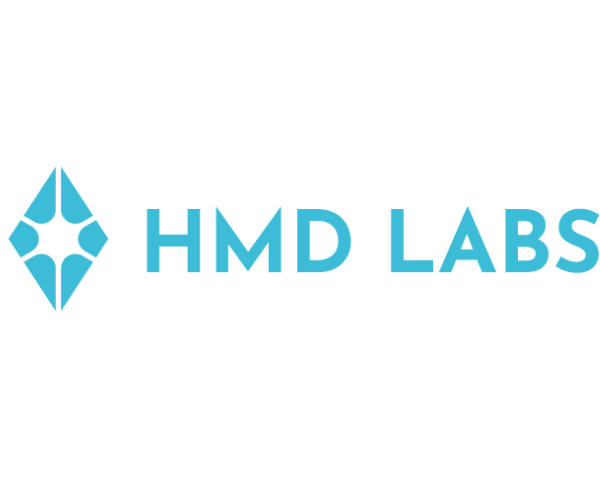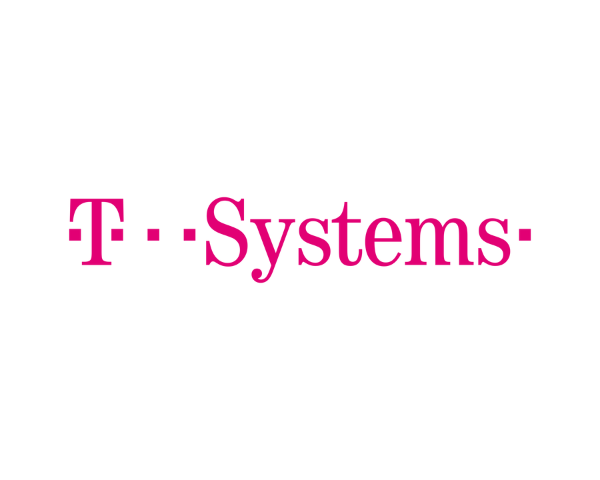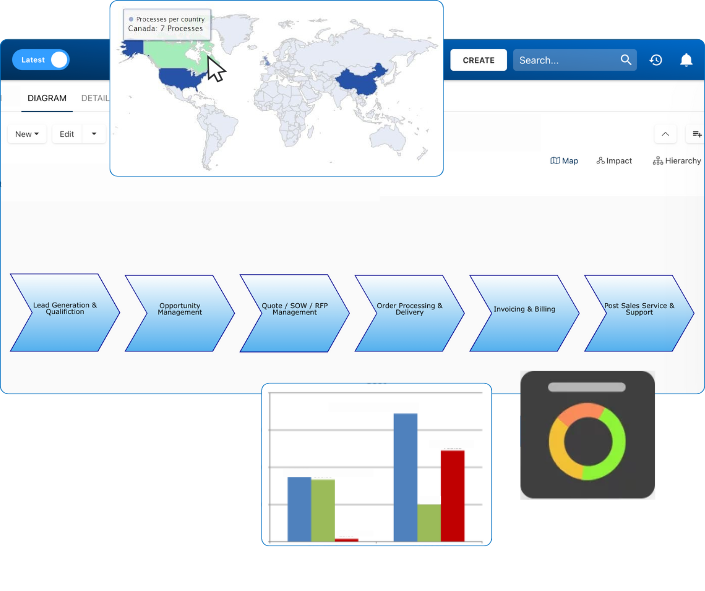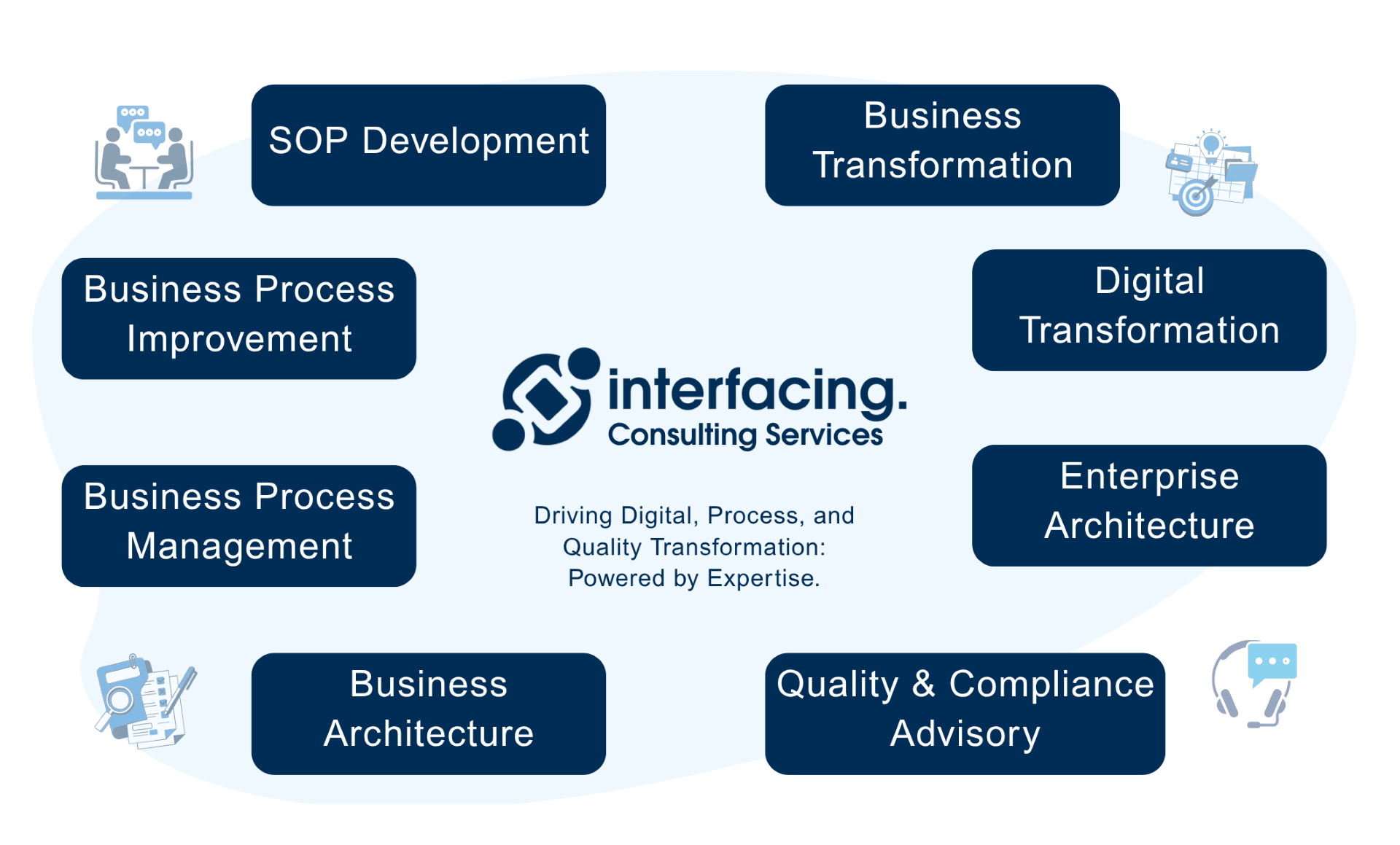- Business Process Management (BPM)Document Management System (DMS)Electronic Quality Management System (QMS)Risk, Governance & Compliance (GRC)Low Code Rapid Application Development (LC)Business Continuity Management (BCM)Enterprise Architecture (EA)Business Process Management (BPM)Document Management System (DMS)
- Document Control Overview
- AI Content Creation & Improvement
- Policy & Procedure Management (SOP)
- AI Content Mining Parser
- Collaboration & Governance
- Data Migration & Integration
- Interfacing Offline App
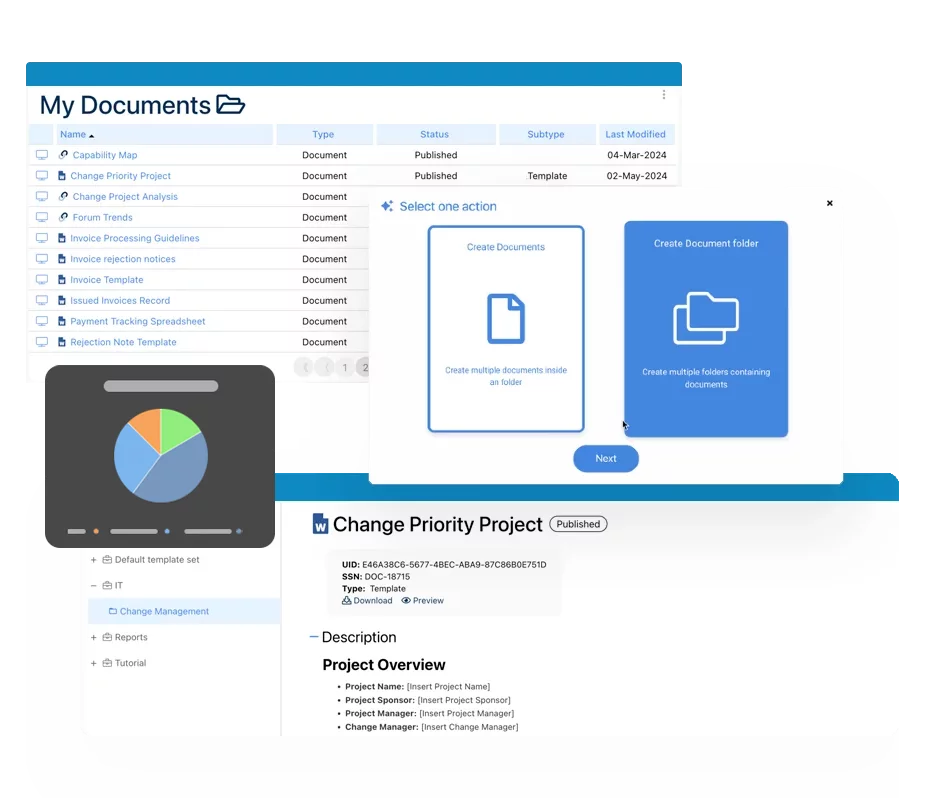 Electronic Quality Management System (QMS)
Electronic Quality Management System (QMS)- Quality Management System Overview
- Document Control & Records Management
- Audit & Accreditation Management
- Corrective & Preventative Action
- Quality Event (Non-conformity / Complaint/ Compliance)
- Risk Management
- Incident Management
- Environmental Health & Safety
- Product & Supplier Management (SCAR)
- Training Management
- Control Management
- Action Items Management
- Management Review
- FMEA
- Pharmacovigilance
- Data Migration & Integration
 Risk, Governance & Compliance (GRC)
Risk, Governance & Compliance (GRC)- Risk, Governance & Compliance Overview
- Risk & Control Management
- Regulatory Compliance
- Collaboration & Governance
- Data Migration & Integration
- Interfacing Offline App
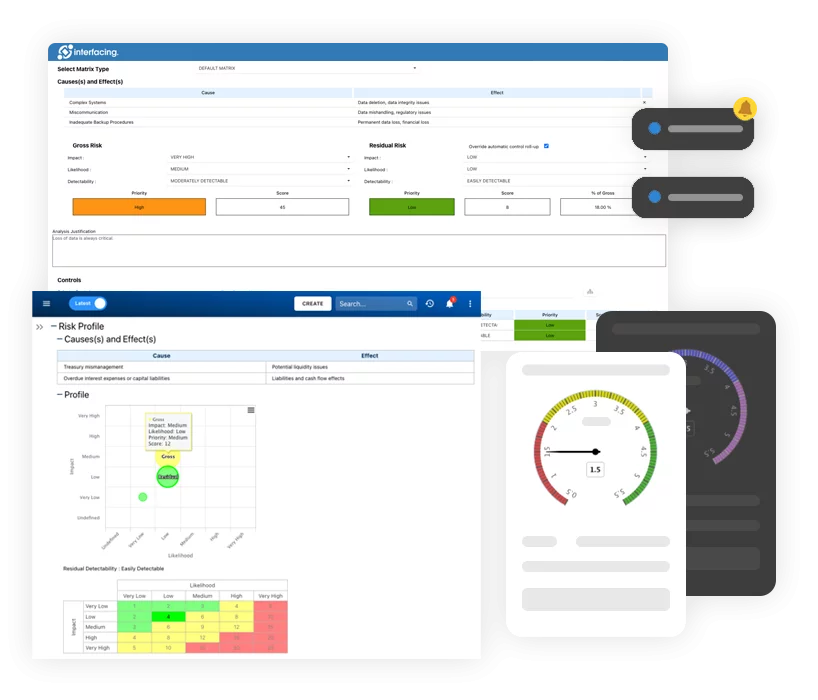 Low Code Rapid Application Development (LC)
Low Code Rapid Application Development (LC)- Low Code Automation Platform Overview
- Electronic Web Form Design (eFORMS)
- Database Table Entity Designer
- System Integration Designer
- Design & Manage Tasks
- Design & Manage BPMS Apps
- Custom Rules/Guards/Actions
- Electronic Services
- User Homepage
- BAM (Business Activity Monitoring)
- Custom Dashboard Design
- Data Migration & Integration
 Business Continuity Management (BCM)
Business Continuity Management (BCM)- Business Continuity Management Overview
- Business Impact Analysis
- Disaster Recovery Simulation
- Action Item Management
- Mass Notification Management
- Asset Management
- Interfacing Offline App
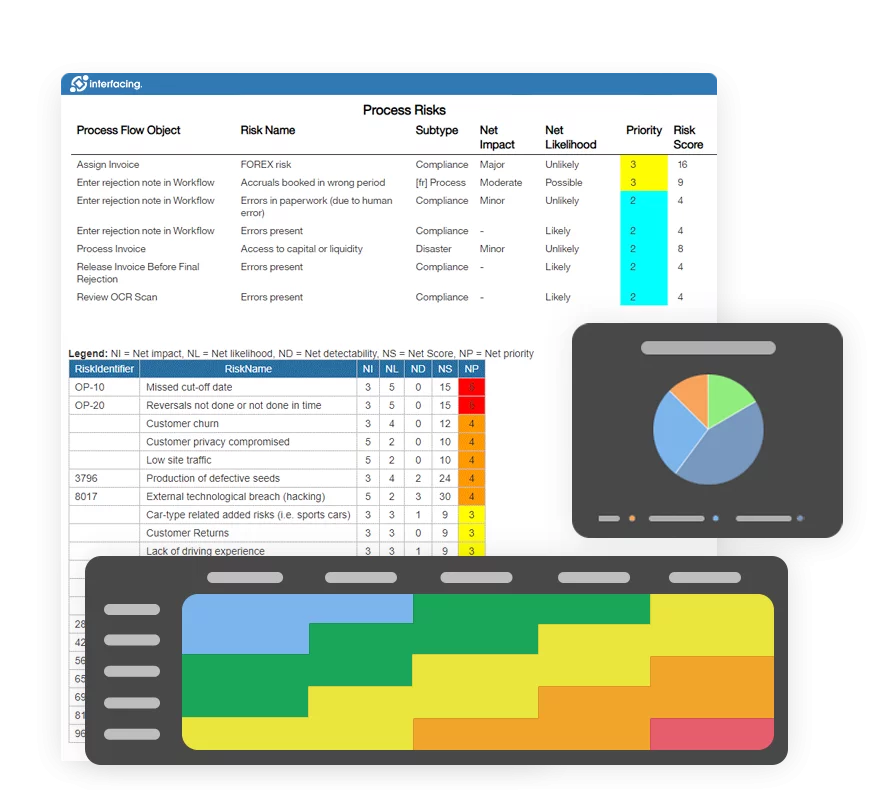 Enterprise Architecture (EA)
Enterprise Architecture (EA) - IndustriesRegulatory ComplianceUse CasesLearning CenterFramework & PracticesIndustries
- Healthcare
- Medical Device Technology
- Life Science, Pharmaceutical
- Aerospace & Defense
- Airlines and Aviation
- Media & Telecommunications
- Government and Military
- Technology
- Energy
- Logistics & Port Operations
- Banking & Capital Markets
- Retail & Consumer
- Consulting
- Education
- Engineering & Construction
- Manufacturing
- Financial Services
- Insurance
- Chemicals
Regulatory Compliance- Regulatory Compliance
- ISO
- ISO 9001 (guide)
- ISO 9001:2026 (preparation)
- ISO 17025
- ISO 27000
- ISO 27001
- ISO27002
- ISO 42001
- EU AI Act
- SOC 2 Type 1 & 2
- Sarbanes Oxley
- GxP
- GRC
- Basel
- Digital Signature
- GDPR
- IFRS
- NIST SP 800-53
 Use Cases
Use Cases- Quality Management System (QMS)
- Digital Transformation
- Continuous Improvement
- Governance, Risk & Compliance
- Knowledge Management
- System Deployment (ERP, CRM…)
 Learning CenterFramework & Practices
Learning CenterFramework & Practices - AboutCustomer SuccessPartners



What is RASCI / RACI:
Please Select contact form.
A Comprehensive Guide on How and When to Use Them

When working on projects, RASCI surfaces as an important tool. If you’ve never heard of this framework before, let’s try a hypothetical scenario to show you, its value.
You and a few colleagues have been assigned to a large and important project. Let’s say you are the team lead with 9 others in your group. You’ve assigned one as your assistant, leaving the other 8 to manage tasks and fieldwork. Pretty much anything that isn’t managerial in nature.
At some point you realize you may need some way to put on paper who is doing what on the project. Not only that but also how much authority they have to make decisions along the project’s life-cycle. Without some sort of mechanism in place, the likelihood something will go very wrong, very fast, will likely occur early on, turning your project into a disaster.
Enter the RASCI matrix. This tool is designed for project management. This matrix or framework helps with the following:
- Project task breakdowns
- Identifies who is on the project both as a participant and those who are related to the project but do not participate daily.
- This matrix assigns specific roles and responsibilities to each project member directly related to what part of the project they are working on.

Definition: RASCI is a matrix (i.e. chart, model or framework) that is used to help identify all the roles and responsibilities of each stakeholder on a project. It clearly defines who is working on a specific subtask of a project.
RASCI is short for: Responsible, Accountable, Supportive, Consulted, Informed
RASCI charts take away the situations involving the “who does what”, “who can help with this task”, and “who’s responsible for this task” scenarios on many projects without RASCI. By using RASCI we can:
- Quickly resolve project conflicts within groups
- Efficiently manage projects
- Eliminate all confusion by assigning specific tasks to each project group member
- See that all project responsibility is documented and distributed properly
- Identify if any one individual is overburdened with task assignments
- Provide clarity by establishing the organizational project hierarchy
Let’s expand on the definition a bit more:
Responsible – Think of this person as the project owner. There can be multiple people responsible for a task and if help is needed, they may ask a supportive member(s) to assist.
Accountable – This person has final control over a project task and the resources associated with it. They will generally assign and delegate project work responsibilities. It is highly recommended to only use one person accountable to one task.
Supportive – Supportive people are able to provide resources to the Responsible project team members. They are actively involved in working with the Responsible person to see the project through to completion. Supportive persons and Responsible persons both have the same goals to achieve.
Consulted – Those who are Consulted are there to help the Responsible person finish tasks with success. These people can be consultants in their respective field that bring valuable subject matter expertise to the project. Responsible persons will use Consulted for advice, opinions, help, or experience relevant to the project.
Informed – These are people who need to be kept in the loop during the project life-cycle. Due to their status as a project stakeholder or the fact they will be impacted by the project, they will need to be informed about progress, at all stages, up-to and including project completion.
Interfacing’s industry breakthrough AI technology transforms the creation and management of organizational structures:
- Assigns optimal Responsible roles & assets to every task in your AI-generated processes
- Generates entire libraries of roles & assets tailored to your requirements in seconds
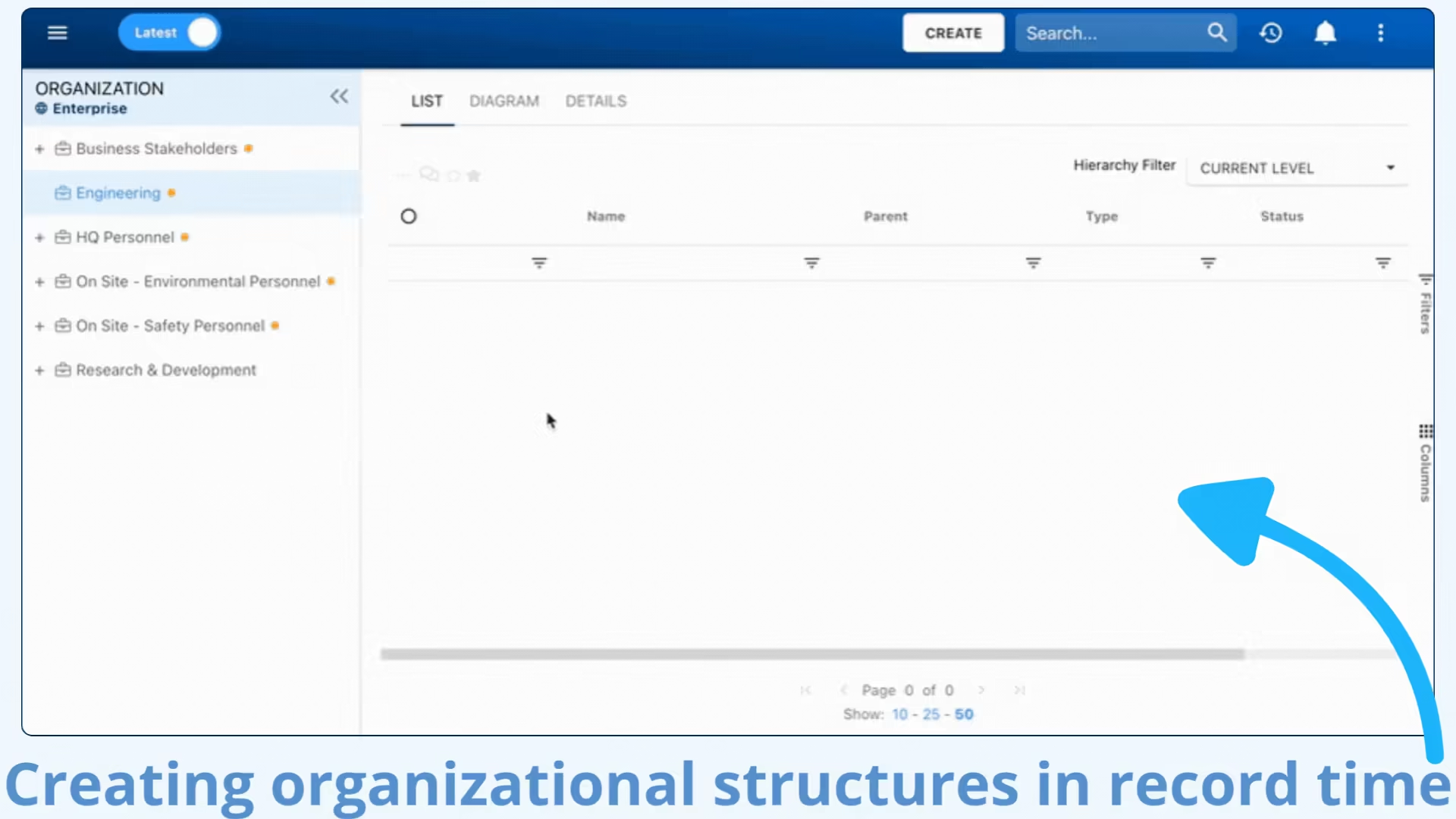

RASCI Matrix: A Basic Model Structure
As you can see here, the left side of the matrix lists all the tasks involved with the project. The top of each column in the model represents a stakeholder for the project.


If we take it a step further, we can show that the project involves the following Roles (individuals or positions involved), Project Manager, Tester, Analyst, Product Developer, and the Service Team. The tasks assigned to each Role are Planning and Analytics, Designing / Prototyping, Coding, Testing and Review, Deployment and finally Maintenance.
A matrix will be needed now as we would be going row by row to define each roles involvement in the project. For example, regarding the first task, the Project Manager in this model is accountable for each task and is considered the project owner regarding Planning and Analytics. The Analyst will be Responsible for the Planning and Analytics of this project and will involve individuals from the Product Development and Service teams to consult & contribute to the project. The rest of the project matrix would look something like this.


RASCI and RACI – Is There a Big Difference?
With many RASCI and RACI charts out there, it can get a bit confusing when differentiating between them.
Both terms are used interchangeably quite often. While in all practicality, they do mean the same thing, there is of course a marked differentiator with the “S” in RASCI (meaning Support). Organizations that choose to use RACI, may do so because an “S” is not required to be identified as it can be part of the “R” (Responsible) or “C” (Consulted) as team members.
What makes the biggest difference of including the “S” in RASCI is that it acknowledges the fact that those identified as a Supporter to the project are a resource that is a cost to the project and the Supporter’s time. Even though they are not directly responsible to the project task, they are involved providing experience, knowledge, technical skills etc. that have a cost attached to it, be it time, compensation or an activity of some sort. Using the “S” clearly shows that there are a group of unaccounted for project team members providing resources without responsibilities that are of critical impact to the project.
For example, a sales manager may be accountable for a software development RFP, while the sales rep is responsible for completing the RFP. At this point clarifications are needed from the engineering team. The engineer who is not in any way connected to sales, provides information in order to complete the document (contributor). The engineer is not responsible to complete the RFP nor are they accountable that it goes out-on-time and on-cost, however, the engineer’s experience and input is critical to the success of quality of the RFP responses and estimates.
By identifying the “S” in a project, it brings a more focused recognition to the specific involvement of project team members and helps to define the expectations and deliveries of each role
Variations of RASCI
RACI-VS
RACI-VS offers two extra indicators i.e. Verification (V) and Sign-Off (S). In core RACI, there is a chance of missing out any completion details against any task. To overcome any possible deficiencies in any task, RACI-VS allows marking those roles as “V” who will scrutinize the quality and correctness of a given specific task. And to supervise both “V” and “R” | “A” roles, there will be a role “S”-Sign-off who will provide the task completion verdict by approving it.
RACIO (or CIARO):
offers an extra participation type “O” which often means “Omitted” or “Out of the Loop”. It just allows explicit mentioning of the roles excluded from the scope of a certain task. This helps in clarifying the engaged and unengaged resources in a task/project.
DRASCI:
it is just like RASCI but has a “D-Driver” who centrally delegates the responsibilities.
DACI:
it replaces “D-Driver” with “R-Responsible” in RACI.
RATSI:
it’s a further derivation of RASCI which highlights the actual “T-Task” performers which can further help in detailed Resource evaluation.
RAPID:
It focuses on assigning decision-making responsibilities between different roles, unlike RACI which is purely task-driven. The need for RAPID originated with the growth of continuously evolving and collaborating hierarchies of one or more companies or teams where there are multi-level managerial and leadership roles against any single decision.
Only One Responsible in a RASCI, Combining R & A’s and the need for ‘S’, ‘C’ or ‘I’.
As responsibilities and tasks are spread out amongst project group members the preference is to keep the “R” and “A” limited to one per individual task. In essence, for each one task, one of the members on the team must be held responsible. The difference comes with organizations who have decided that more than one “R” for example may be required.
For some organizations, a single party responsibility is best for the completion of a task. They believe that to brin two or more responsible for this one task would be an inefficient use of project resources. Other will argue that the task at issue carries great significance and that having more than one stakeholder be responsible is needed as the combined effort of the “R”s bring better expertise to the task.
On another note, there will be times that a Responsible and Accountable party for a task may be the same individual. It is an obvious assumption on certain projects. When this is the case, there is no need to separately mention the “R”. In the case though of two people assigned the same Responsibility and Accountability, there needs to be at the very least, one “R” and one “A” per individual task.
Lastly, there will be projects where an individual task does not need an ‘S’, ‘C’ or an ‘I’. Having gaps in your matrix is not an issue in the case and is quite normal. Not every blank cell needs to be filled in a matrix.
What is Vertical & Horizontal Analysis in a RASCI matrix?
It is one thing to draw up a RASCI Matrix, it is another to verify its integrity. There are two ways in-which you can check your matrix; vertical analysis and horizontal analysis.

Vertical Analysis
Check each column up and down, cell by cell and look for pain point indicators:
- No ‘R’ may leave a group member with no responsibility. Time and resources may be wasted doing minor tasks or nothing at all.
- Too many ‘R’s may leave a group member overburdened, lowering their productivity.
- Too many ‘A’s could leave one person controlling major decisions for multiple subtasks. There is a chance the project may slow down. There is an exception though if the project manager is the accountable one overall.
- All boxes are filled out may mean one individual may become overwhelmed with too much on their plate.
- Too many free boxes may lead to an individual having too much free time on their hands, causing time and resource wastage.

Horizontal Analysis
Check each row left to right, cell by cell and look for pain point indicators:
- No ‘R’ means a particular subtask has no one responsible, which could leave the task incomplete.
- Too many ‘R’s means a task was divided among too many team members. This leads to a ‘Too many cooks in the kitchen’ scenario.
- No ‘A’s will leave the ‘R’s with no one to report to or to seek permission from.
- Too many ‘A’s can cause conflicts as now there are too many people involved in the decision-making of this particular subtask.
- Too many ‘C’s and ‘I’s can lead to over-communication back and forth as too many people have been asked to consult on a particular task.
The Impact of Not Following RASCI
If your project is complex, involving many team members and a significant number of tasks then not using a RASCI matrix will result in an eventual negative impact both on the project team members and overall, on a variety of project outcomes.
There will be no teams or even individuals working in harmony. Blame will be passed around; accountability is not enforced and decisions will be made without involvement or knowledge of other team member areas or worse yet even the smallest of decisions won’t be made, holding everything else up.
Without proper assignment of duties, the possibility of time wasters and team members slacking off is very high. While on the other hand, certain team members may feel overwhelmed as they have been handed too much work to complete. Demotivated teams never deliver 100%.
Final Thoughts
Keep in mind there is a fine line when creating your tasks in a RASCI matrix. If you end up going too high -level things will slip through the cracks, making the entire exercise pointless. Yet by going too far into detail, you’ve just promoted yourself to that of a micro-manager.
A good way to look at deciding what goes into the matrix would be to think of the process itself as opposed to one-off individual tasks. So for example, the UI of a new feature needs to be in the matrix (the designers doing the job, the client, the developers and the project manager). As for whether a button should be green or red, square or rounded; that can be left to the team and not as part of the RASCI matrix.
It is obvious RASCI matrices are needed on complex projects. They are extremely helpful as they create a highly efficient mechanism for task distribution while significantly coming very close to eliminating any ambiguity within the project hierarchy of tasks.


Why Choose Interfacing?
With over two decades of AI, Quality, Process, and Compliance software expertise, Interfacing continues to be a leader in the industry. To-date, it has served over 500+ world-class enterprises and management consulting firms from all industries and sectors. We continue to provide digital, cloud & AI solutions that enable organizations to enhance, control and streamline their processes while easing the burden of regulatory compliance and quality management programs.
To explore further or discuss how Interfacing can assist your organization, please complete the form below.

Documentation: Driving Transformation, Governance and Control
• Gain real-time, comprehensive insights into your operations.
• Improve governance, efficiency, and compliance.
• Ensure seamless alignment with regulatory standards.

eQMS: Automating Quality & Compliance Workflows & Reporting
• Simplify quality management with automated workflows and monitoring.
• Streamline CAPA, supplier audits, training and related workflows.
• Turn documentation into actionable insights for Quality 4.0

Low-Code Rapid Application Development: Accelerating Digital Transformation
• Build custom, scalable applications swiftly
• Reducing development time and cost
• Adapt faster and stay agile in the face of
evolving customer and business needs.
AI to Transform your Business!
The AI-powered tools are designed to streamline operations, enhance compliance, and drive sustainable growth. Check out how AI can:
• Respond to employee inquiries
• Transform videos into processes
• Assess regulatory impact & process improvements
• Generate forms, processes, risks, regulations, KPIs & more
• Parse regulatory standards into requirements

Request Free Demo
Document, analyze, improve, digitize and monitor your business processes, risks, regulatory requirements and performance indicators within Interfacing’s Digital Twin integrated management system the Enterprise Process Center®!
Trusted by Customers Worldwide!
More than 400+ world-class enterprises and management consulting firms






















